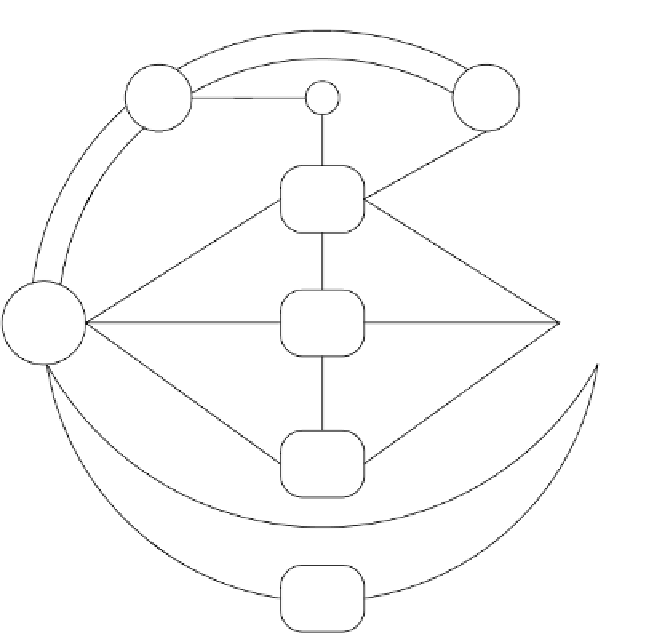Geoscience Reference
In-Depth Information
Nitrogen compounds can be classified into organic and inorganic nitrogen. Organic
nitrogen in water bodies can be found in both dissolved and particulate forms. The
particulate organic nitrogen (PON) is composed of organic detritus particles and
phytoplankton and has two possible fates. Dead plant cells lyse and bacteria degrade
the resulting dissolved organic nitrogen (DON) or protozoa/zooplankton to consume
PON.
12
Most of the DON in seawater is still chemically uncharacterized, and its
chemical and biological properties are becoming better known.
7
Except for amino
acids and urea, which comprise only a small fraction of DON, most of the DON
may be resistant to decomposers.
10
Excretion by animals also releases dissolved
nitrogen. Zooplanktons excrete free amino acids, ammonia, and urea. Fish excrete
ammonia, urea, and other organic compounds.
7
In aquatic ecosystems, a very complex biogeochemical nitrogen cycle is
observed (Figure 4.1). The following sections give information about the processes
involved in the biogeochemical cycling of nitrogen in the aquatic environment.
4.1.1.1
Uptake of Nitrogen Forms
Primary production in coastal waters is largely regulated by the availability of NH
4
+
and NO
3
−
for growth. Ammonium is preferred by phytoplankton, as its oxidation
trif
i
nit
ri
o
n
NO
−
N
2
NO
−
denitrification
N
2
fixation
Phyto-
plankton
grazing
excretion
death
Zoo-
plankton
Organic
Detritus
NH
+
grazing
Fish
liz
Sediment
FIGURE 4.1
Nitrogen cycle.




































Search WWH ::

Custom Search